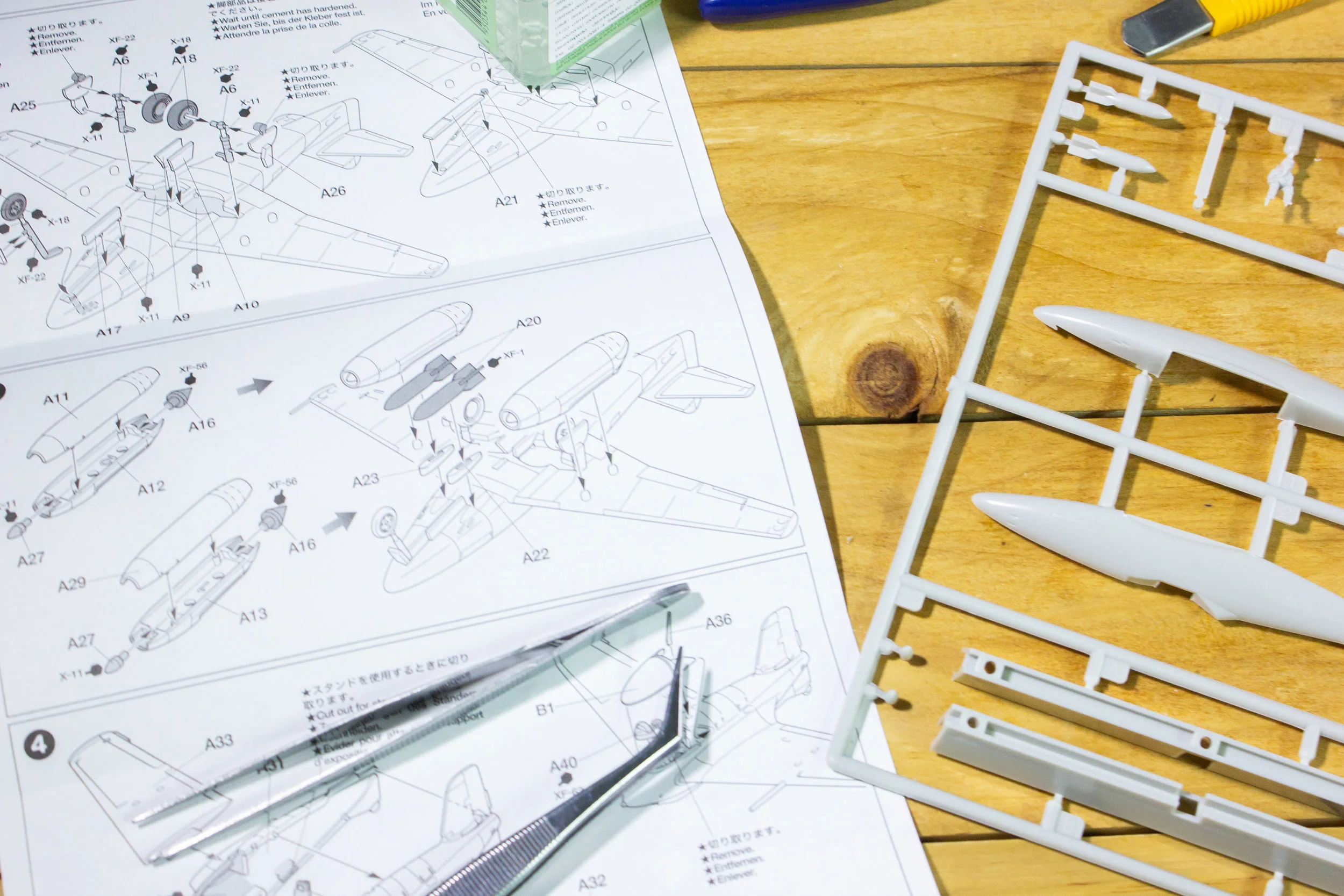When I was four years old, someone gave me my first “model airplane kit.” It was a bag of plastic pieces (each attached to all the others), a tube of glue, and an instruction sheet.
By following the illustrated instructions, I was able to make a model that resembled the picture on the box cover. I found it satisfying; I immediately wanted more kits to make.
From the time I was four until I was about seven, I assembled scores of such kits. Each time I expected to be given a present, I asked for another kit! I even saved up my five-cent-per-week allowance to buy more 95-cent kits.
Dead End?
For all my enjoyment, I ran out of enthusiasm for model planes rather quickly.
To be sure, I had been exposed to an engaging hobby, but the only processes I learned were these:
1) Following step-by-step instructions
2) Gluing part A to part B
When I left model airplanes behind, I thought I had just “grown out of” the hobby.
But now I understand that the pre-made model planes could have been an introduction to a more creative hobby: the modification and even design of model airplanes.
Making Airplanes: New Frontiers
Nowadays, with advantages unavailable in my childhood (such as the internet, model-airplane clubs, and nationally sponsored aviation programs, etc.) many children and teens are able to learn some truly interesting processes:
- How to design a toy airplane so it will fly;
- How to modify existing designs creatively;
- How to build an actual working airplane (really! See https://www.buildaplane.com/ )
In general, today’s model airplane enthusiasts can more easily learn how to:
- Carry out glue-based (and screw- or computer-based) construction and design processes,
- Solve problems in airplane construction, and
- Gain the satisfaction of creating something never exactly done before.
What’s the Difference?
Assembling a kit is a low-creativity skill, with only a couple transferable processes. (Well, I am pretty good at assembling Ikea furniture, wherever that rates on the scale of life-enriching abilities.)
But the principles of flight and aircraft design are deeply engaging, and they open the doors to endless chances for creativity.
In short, the processes of actual airplane building and design are much richer than the assemble-by-numbers tasks I learned.
Storytelling: Creative Process or Mechanical Assembly?
How do the limitations of “follow the numbers” airplane kits relate to storytelling? If you’ve been following my newsletter or taking my courses, you aren’t surprised by the answer:
Most of us have only been exposed to “story assembly” learning—rather than “story process” learning.
That’s too bad. As with model airplane hobbies, the true excitement comes when you learn to carry out processes that fully engage your creativity, rather than constrain and misrepresent it. Sadly, much of our schooling about stories and storytelling only looks at “assembling the parts.”
What Are You Waiting For?
The fun accelerates when you stop looking at the list of parts and begin playing with the essential processes of storytelling.
You have the option, right now, to reclaim the full spectrum of creativity in storytelling1
